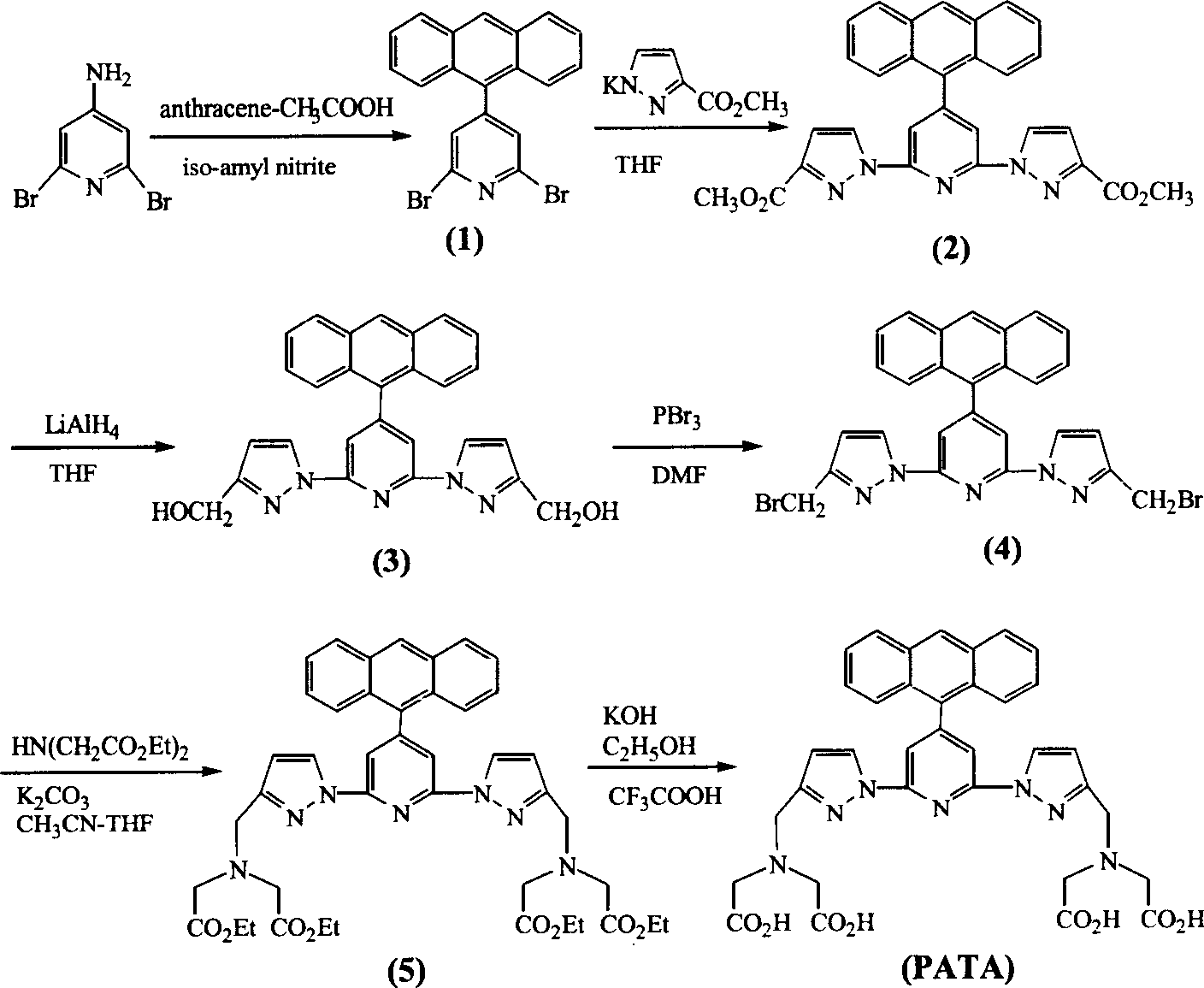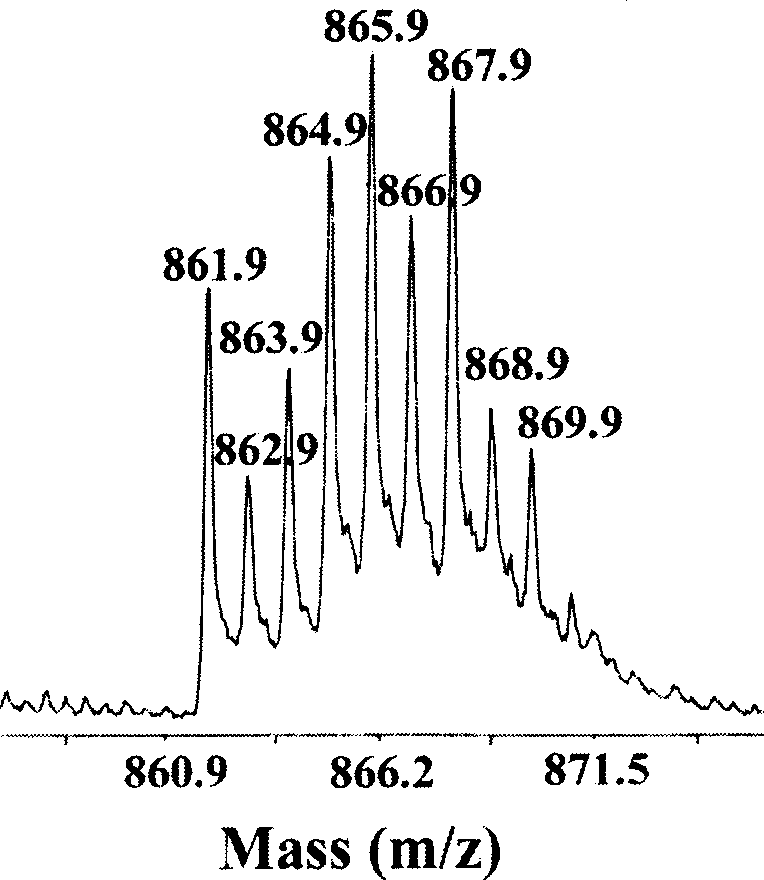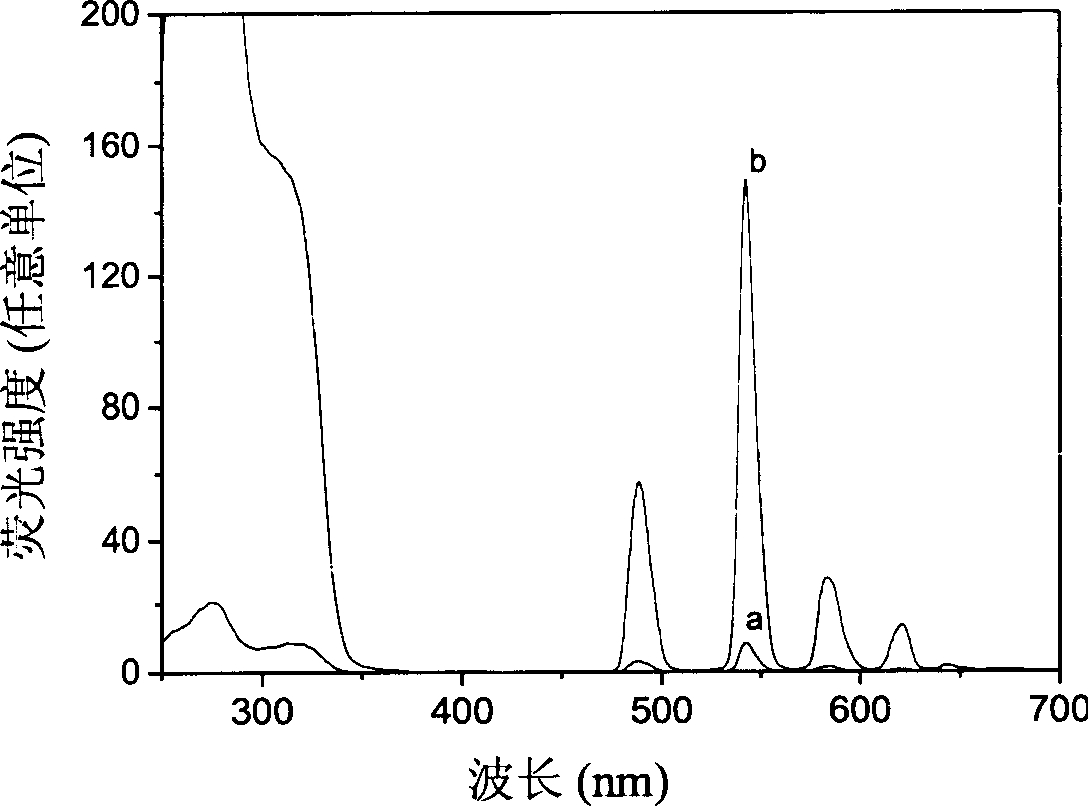Terbium coordination compound singlet oxygen fluorescent probe and application thereof
A singlet oxygen and terbium complex technology, applied in the field of new terbium complex singlet oxygen fluorescent probes, to achieve high detection sensitivity, good selectivity, and high selectivity
- Summary
- Abstract
- Description
- Claims
- Application Information
AI Technical Summary
Problems solved by technology
Method used
Image
Examples
Embodiment 1
[0031] Example 1. Ligand N, N, N 1 , N 1 -Synthesis of [2,6-bis(3'-aminomethyl-1'-pyrazolyl)-4-(9'-anthracenyl)pyridine]tetraacetic acid (PATA for short)
[0032] Ligand PATA synthetic route such as figure 1 As shown, the specific operation process is as follows:
[0033] (1) Synthesis of 2,6-dibromo-4-(9'-anthracenyl)pyridine (compound 1)
[0034] Add 2.52 grams of 4-amino-2,6-dibromopyridine (10.0 mmol) and 2.14 grams of anthracene (12.0 mmol) to 150 ml of acetic acid and 50 ml of dichloromethane, and add 2.0 grams of nitrosyl isoamyl ester dropwise under stirring at 0°C ; After the reaction solution was stirred and reacted at room temperature for 48 hours, saturated Na was added 2 CO 3 The solution was neutralized, and then the product was extracted with 4×60ml of chloroform; after the chloroform solution was dried with anhydrous sodium sulfate, the solvent was evaporated under reduced pressure; the product was separated by silica gel column chromatography, and the pro...
Embodiment 2
[0045] Example 2.PATA-Tb 3+ Reaction of Complexes with Singlet Oxygen
[0046] Equimolar amounts of PATA and TbCl 3 Soluble in 0.1mol / L NaHCO 3 In aqueous solution, PATA-Tb can be obtained 3+ The solution of the complex; using Na 2 MoO 4 Catalyzes H under weakly basic conditions 2 o 2 The generated singlet oxygen was used as the singlet oxygen source, and the PATA-Tb 3+ The reaction product of a complex with singlet oxygen. Specifically, add PATA-Tb to a 0.1mol / L carbonic acid buffer solution with a pH value of 10.5 3+ Complexes, Na 2 MoO 4 and a certain amount of H 2 o 2 , and the reaction solution was measured after reacting at 25° C. for 20 hours. figure 2 for PATA-Tb 3+ The mass spectrometry (ESI-MS) measurement results of the product after reacting with singlet oxygen show that the product is PATA-Tb 3+ The inner oxide (referred to as EP-PATA-Tb 3+ ).
Embodiment 3
[0047] Embodiment 3.PATA and rare earth ion (Eu 3+ and Tb 3+ ) Fluorescence property determination of complexes
[0048] 1. Fluorescence spectrum, fluorescence intensity and fluorescence lifetime
[0049] When PATA is mixed with rare earth ions in aqueous solution, it can rapidly form a stable and almost non-fluorescent complex. However, when it reacts with singlet oxygen, the fluorescence signal is significantly enhanced. Determination of PATA-Tb using 0.05mol / L boric acid buffer solution with pH value of 9.1 as solvent 3+ 、PATA-Eu 3+ and its inner oxide EP-PATA-Tb 3+ 、EP-PATA-Eu 3+ The UV-visible spectrum, fluorescence spectrum, molar absorptivity, fluorescence quantum yield and fluorescence lifetime in the solvent; the UV-visible spectrum was measured with a Tianmei UV 7500 spectrophotometer; the fluorescence was measured with a Perkin Elmer LS 50B fluorescence spectrophotometer. The quantum yield was measured using the complexes of 4'-phenyl-2,2':6',2"-biteropyridine-6...
PUM
 Login to View More
Login to View More Abstract
Description
Claims
Application Information
 Login to View More
Login to View More - R&D
- Intellectual Property
- Life Sciences
- Materials
- Tech Scout
- Unparalleled Data Quality
- Higher Quality Content
- 60% Fewer Hallucinations
Browse by: Latest US Patents, China's latest patents, Technical Efficacy Thesaurus, Application Domain, Technology Topic, Popular Technical Reports.
© 2025 PatSnap. All rights reserved.Legal|Privacy policy|Modern Slavery Act Transparency Statement|Sitemap|About US| Contact US: help@patsnap.com



